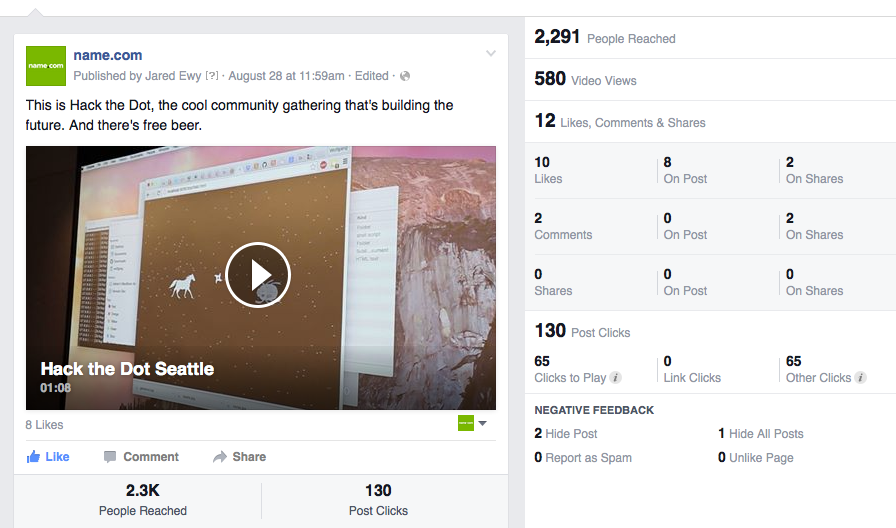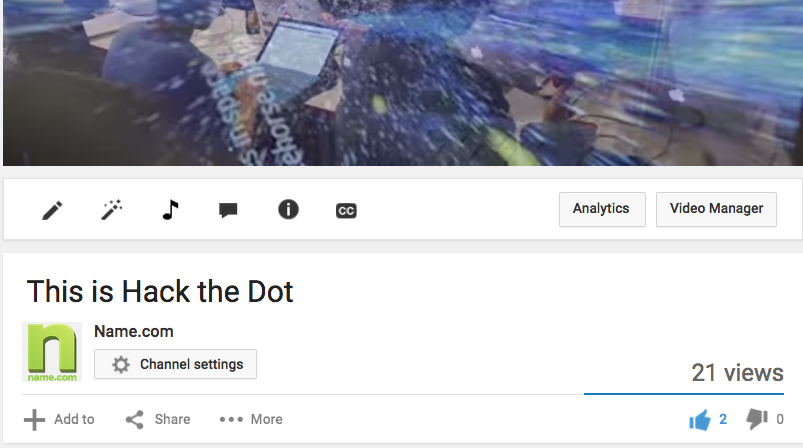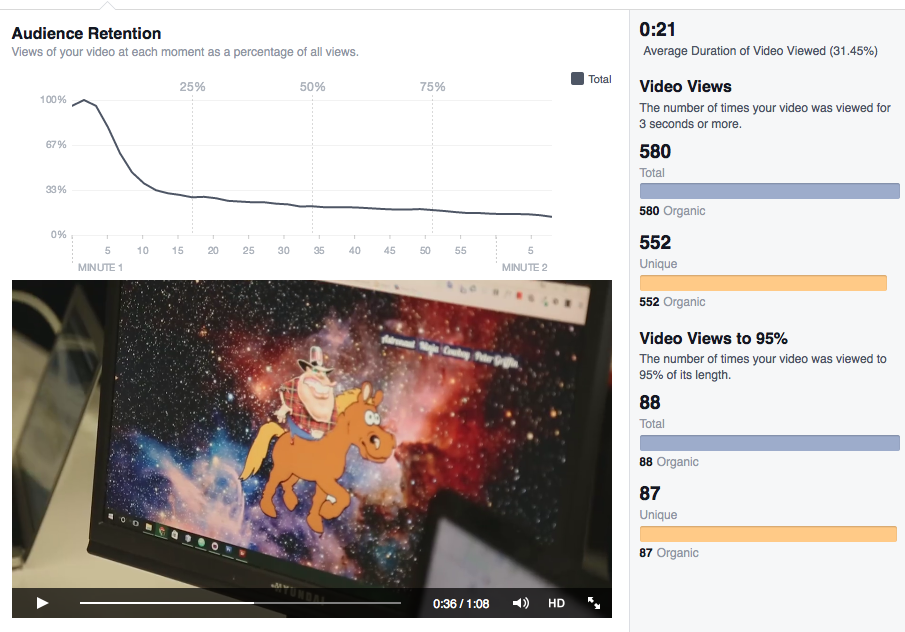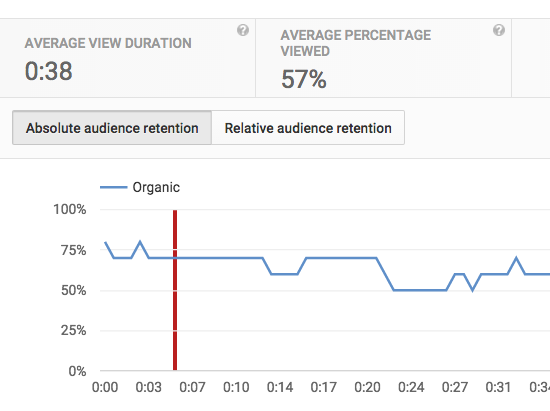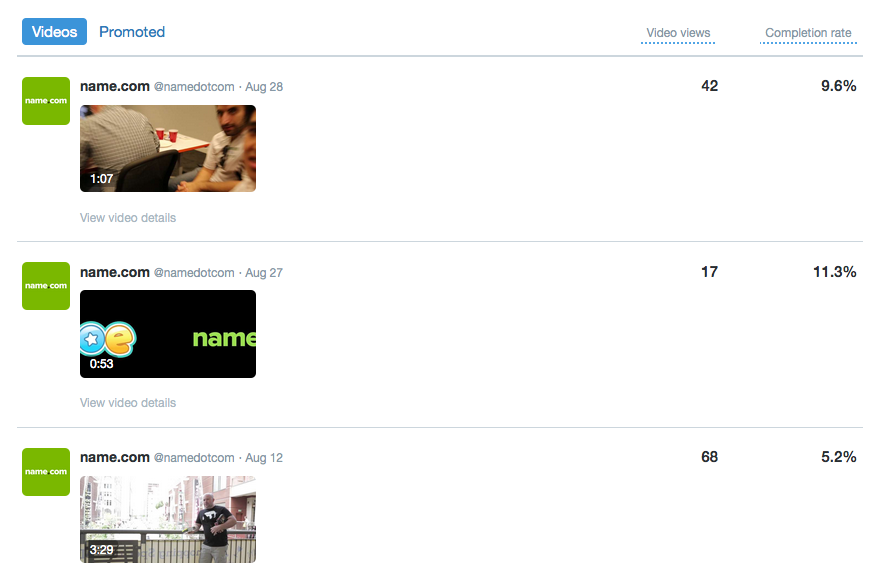YouTube, you lose? The surprising video platform that gets the most views
At Name.com, we make a lot of videos. We rely on them to sell products, share information, and bring joy. But we also relied too much on YouTube as our sole source of video exposure. It’s an easy trap to get caught in: YouTube is a subsidiary of Google, and the two of them together […]
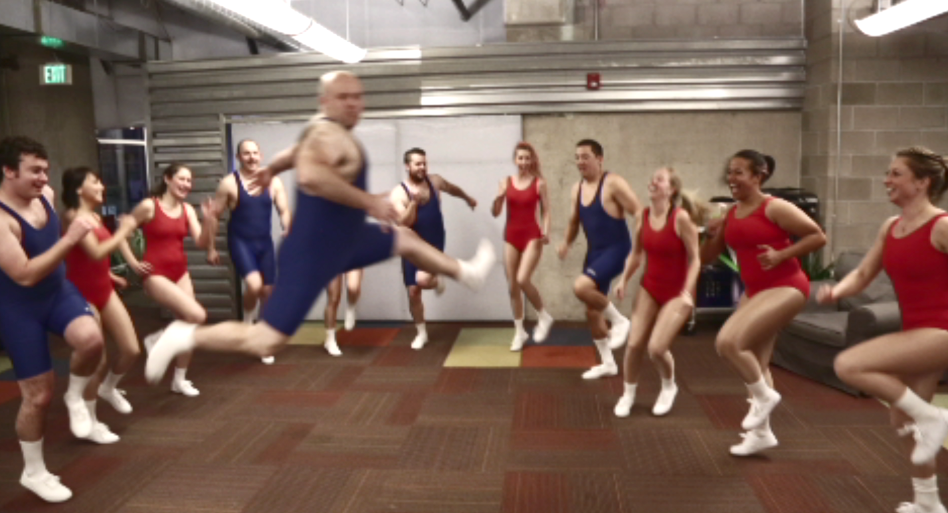
At Name.com, we make a lot of videos.
We rely on them to sell products, share information, and bring joy. But we also relied too much on YouTube as our sole source of video exposure. It’s an easy trap to get caught in: YouTube is a subsidiary of Google, and the two of them together are search engine beasts. Google is the #1 online search engine and YouTube is #2.
The one thing these internet giants lack is engagement—or at least the engagement you want. YouTube comments can be the internet’s bathroom stall of conversation.

Facebook, however, has recently emerged as the number one online video platform. What? Yes…it’s weird, but ever since what seems like a trillion people uploaded their Ice Bucket Challenge videos online (remember that last year?), the world realized they don’t have to post a YouTube link to get video views. They can drop it directly onto their feed, with autoplay and all.
Twitter is also getting into the game. Right now they’re offering a direct upload option, but much of it is still in beta. Even so, we’ve had some success with it.
Another video platform we’re testing, and liking, is a new Boulder company called Visibl.io. Through an algorithm or some sort of internet magic, they are able to place your video across multiple platforms (CNN, YouTube, Roku, New York Times video) that offer video preroll. When there’s available inventory on, say, a Fox News story, they’re able to drop you in as a preroll advertiser.
We’ve used a lot of different video platforms to promote our content, and we’ve learned a lot from the experience. I’ll share the stats below along with a breakdown of the advantages and disadvantages of YouTube, Facebook, Twitter, and Visibl.
How do video platforms stack up?
Facebook kills it in views. Here’s a screenshot of a video I uploaded 72 hours ago. Everything here is the organic activity that’s taken place since:
As you can see, there are some shares and likes but with one post we were able to get 580 views. Here’s what YouTube has done with the same video in the same amount of time:
That’s abysmal. Although we did get two likes. (But one of them is from me.)
HOWEVER, despite Facebook’s high video count, their auto play makes for poor retention. How many videos have you scrolled by just as they’re beginning to play? Apparently this one:
The average video view is low, at about 31% of the video. Of the 500+ views, only 88 stayed to watch the entire thing.
Like Facebook, YouTube counts all views whether they’re 1 second or 100, but without the autoplay feature retention is typically better.
The most obvious lessons here are to make your videos short and get your important message out up front. Our experience with Visibl seems to back that up. I couldn’t upload the Hack the Dot video that I’ve compared on Facebook and YouTube because it was too long. The longest video Visibl accepts is 45 seconds, and you’ll see brevity pay off with the retention our videos have received.
I should mention that to use Visibl you have to do a paid campaign. The upside is that you don’t have to spend much. We did two videos at $100 each. The stats for each video campaign are side by side. You’ll see that for our $200 investment that we received nearly 7,000 views with an average engagement in the mid-seventies. For Visibl, engagement defines the number of people that did not skip the video preroll before watching their intended content.
Finally, we’re just tapping into Twitter video. With one paid run of $500 we saw very good engagement of our 30-second goat video (24% of 12,500 viewed the entire video), but really haven’t seen much organically. Of course it most likely comes down to the content. It needs to be informative and/or entertaining, short enough to keep people from walking away, and positioned in such a way that it matters to the casual passerby.
We may have missed the mark with the above Twitter video uploads, but that brings up something a bit damning about Twitter in general: when people retweet content it seems that sometimes they don’t read or watch what they’ve just retweeted. We thought we had a video go viral because it had upwards of 250 retweets and into the hundreds of thousands of impressions, but the video ended up with a paltry 350 views.
Which platform comes out on top?
For now, for the most organic traction, it seems to be Facebook. You need to dig into the stats to make sure they’re qualified views that will expand your business/idea/empire, but with Facebook built for engagement, which is the root of virality, your short, interesting video piece has a chance to make you a lot of new friends.
